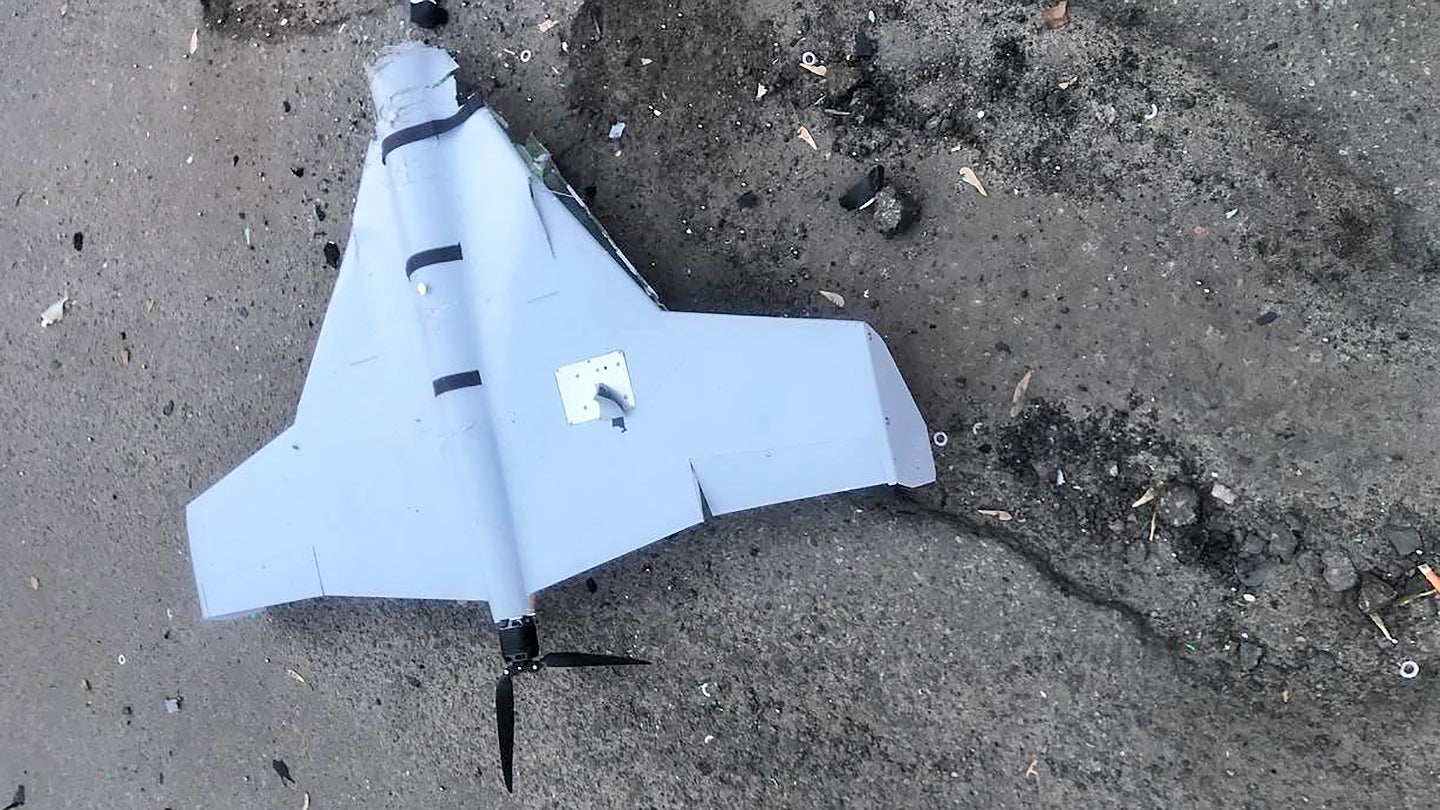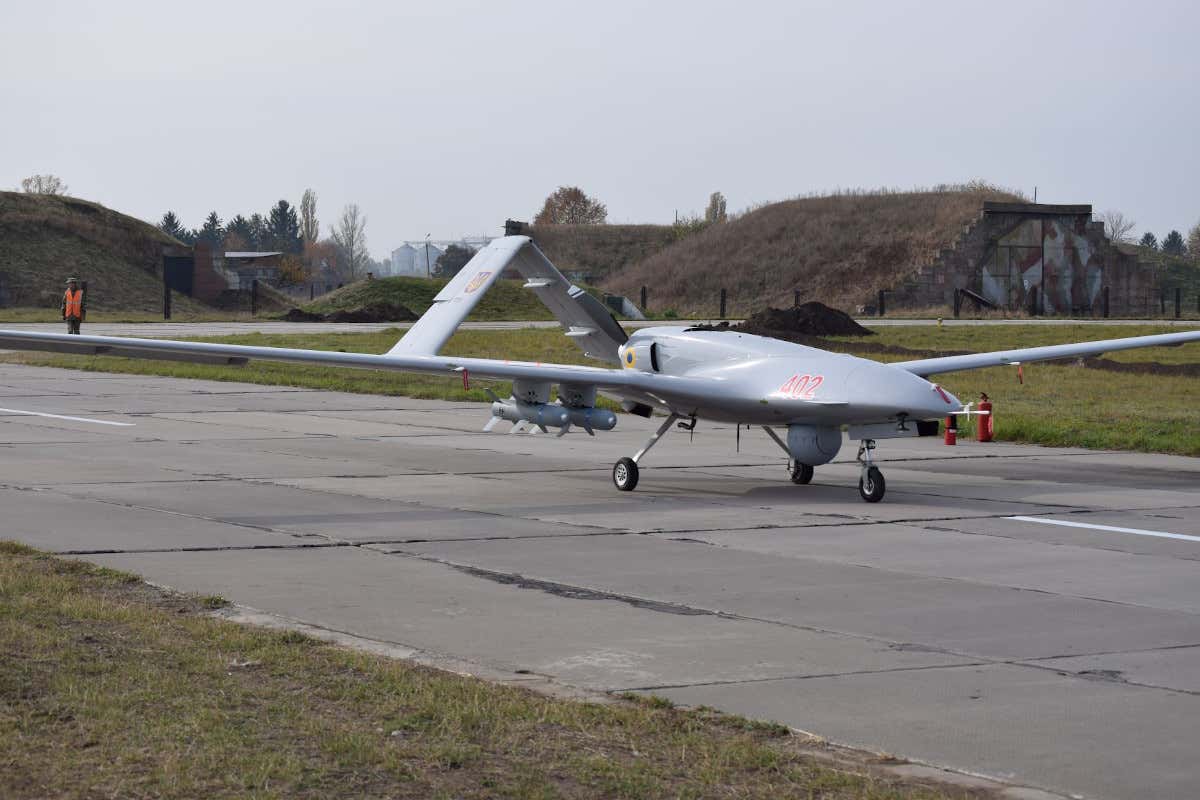As the Russia-Ukraine war intensifies, Russian armed forces have become a subject of mockery by several western experts due to the poor military tactics adopted by Moscow against a ‘much feeble’ Ukraine.
The latest example of Russia’s poor tactics appeared recently when the Ukrainian Ministry of Defense released a video on March 11, showcasing a column of Russian tanks being ambushed about 35km from Kyiv and were forced to retreat.
It appears that President Putin has had enough of the ‘mocking’ with images and videos of Russian tanks, air defenses, artillery columns and convoys being destroyed by drones and artillery fire by the Ukrainian forces.
It appears that Putin may have finally decided to turn these tactics against the Ukrainian forces and give them a taste of their own medicine.
The Russian Ministry of Defense has released a video on March 12, likely taken by an Orlan-10 UAV, showing Krasnopol laser-guided artillery strikes in Kyiv Oblast.
The Russian MoD published a video likely taken by an Orlan-10 UAV reportedly showing Krasnopol laser-guided artillery strikes in Kyiv Oblast. https://t.co/f5VQOdoGV5 pic.twitter.com/nuCW3whhil
— Rob Lee (@RALee85) March 12, 2022
Orlan-10 is a medium-range, multi-purpose unmanned aerial vehicle (UAV) developed by the Russian firm Special Technology Center LLC in St Petersburg.
While this is not the first time Orlan-10 has been used by the Russian armed forces in Ukraine, the latest images from Ukrainian sources also show the remains of what appears to be a Russian-made ‘kamikaze’ suicide drone that fell over the Ukrainian capital.
#Ukraine: The first proof of loitering munitions combat use by the Russian army. ZALA KYB "kamikaze" UAV fell down in #Kyiv today.
The drone didn't explode, however it is unknown if it malfunctioned or it was downed using Ukrainian electronic warfare systems. pic.twitter.com/Ju38t0Qhrp
— ?? Ukraine Weapons Tracker (@UAWeapons) March 12, 2022
Ukrainian sources have claimed that this drone “contained a kilogram of explosives (plastids) with metal balls” and fell over the roof of a building in Podil neighborhood in Kiev and set the roof on fire. The accompanying photos also show clouds of smoke emerging out of a roof on a building.
In #Kyiv on Podil, the building of Oschadbank is on fire
There are no victims or injured
The fire was caused by a fallen drone-kamikaze "Cube"
It contained a kilogram of explosives (plastids) with metal balls#StopRussia pic.twitter.com/ZOvjVuTqrk— Ukrainian Reality (@ukrainiareality) March 12, 2022
The drone featured in the images looks like a KYB “kamikaze” UAV which is developed by ZALA Aero Group, a Russian company that specializes in the manufacture of unmanned aerial vehicles (UAVs). It is the subsidiary of Kalashnikov Group, famous for developing the world’s most iconic weapon, the AK-47 Assault Rifle.
If true, this could be the first documented instance of Russian forces deploying loitering munitions to Ukraine.
The KUB-UAV, is intended to be affordable, simple, and easy to operate that can be used for reconnaissance and attack purposes. As per the company claims, it has an endurance of 30 minutes, speeds of 80-130km/h (48-78mph) and can it carry a payload of 3kg (6.6-pound).
The drone has been used by Russian forces in Syria for striking terrorist targets in Idlib, northern Syria according to reports by Russian state-owned news agencies Novosti and Russia Today.
Responding to reports, Colonel Mustafa Bakour, the official spokesman for the Jaish al-Izza, a rebel group in Idlib, told the NewArab that the Russian forces had tested kamikaze drones in Hama, Syria as early as 2016, which he claimed targeted hospitals and rebel mountain bases.

The KYB drone was first exhibited at the international defense exhibition IDEX 2019 in Abu Dhabi, UAE. In late January, Kalashnikov Group announced that it will commence exports of the KUB loitering munition in cooperation with Rosoboronexport.
These mini-drones can be equipped with cameras and can loiter in the air while relaying enemy positions to the troops on the ground. When the commanders see an appropriate target to hit, they can move the drone to dive onto the target and detonate the warhead on it.
The warheads of loitering munitions are small, having explosive power like a grenade or less which may not be used against hard targets like armored vehicles or tanks but they can hit the enemy on the other side of a hill shielded from observation or fire by terrain, like mortars in defiladed positions, or fly into windows to take out enemy positions during urban combat.

Also, there is another way of fielding loitering munitions and that is, as a countermeasure to sophisticated enemy UAVs like the Turkish-made TB2 Bayraktar.
“The Russians are developing the KUB to use it as an aerial minefield and have proposed that against [Bayraktar] TB2s (as low and slow flying UAVs), they could launch a dozen KUB drones given their swarm capabilities to first identify a Bayraktar and then attack it,” Samuel Bendett, an advisor with the Strategy, Policy, Plans and Programs the US-based Centre for a New American Security, told Shephard Media on February 11.
In 2020, Russian-backed forces in Libya, Syria and the Nagorno-Karabakh region suffered heavy losses due to strikes performed by TB2 Bayraktar drones, and Israeli loitering munitions. These battlefield outcomes were probably eye-openers for the Russian military planners.
ZALA Aero has also been developing a more advanced successor of the KYB UAV, known as the ‘Lancet’ which has three variants Lancet – 1, 2 & 3. Lancet has also been reportedly tested on the Syrian battlefield.
- Written by Tanmay Kadam/EurAsian Times Desk
- Contact the author at etdesk@eurasiantimes.com
- Follow EurAsian Times on Google News




